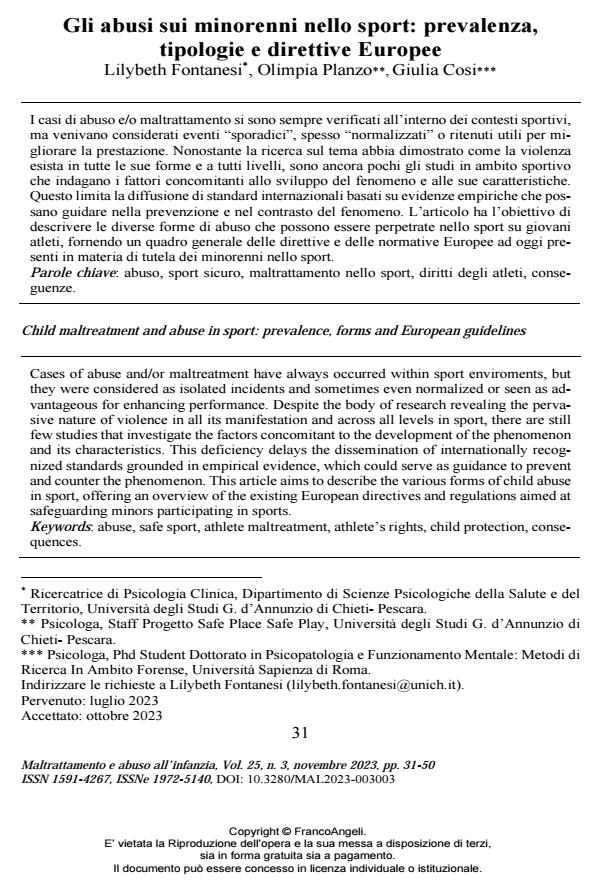Child maltreatment and abuse in sport: prevalence, forms and European guidelines
Journal title MALTRATTAMENTO E ABUSO ALL’INFANZIA
Author/s Lilybeth Fontanesi, Olimpia Planzo, Giulia Cosi
Publishing Year 2024 Issue 2023/3
Language Italian Pages 20 P. 31-50 File size 207 KB
DOI 10.3280/MAL2023-003003
DOI is like a bar code for intellectual property: to have more infomation
click here
Below, you can see the article first page
If you want to buy this article in PDF format, you can do it, following the instructions to buy download credits

FrancoAngeli is member of Publishers International Linking Association, Inc (PILA), a not-for-profit association which run the CrossRef service enabling links to and from online scholarly content.
Cases of abuse and/or maltreatment have always occurred within sport enviroments, but they were considered as isolated incidents and sometimes even normalized or seen as advantageous for enhancing performance. Despite the body of research revealing the perva-sive nature of violence in all its manifestation and across all levels in sport, there are still few studies that investigate the factors concomitant to the development of the phenomenon and its characteristics. This deficiency delays the dissemination of internationally recog-nized standards grounded in empirical evidence, which could serve as guidance to prevent and counter the phenomenon. This article aims to describe the various forms of child abuse in sport, offering an overview of the existing European directives and regulations aimed at safeguarding minors participating in sports.
Keywords: abuse, safe sport, athlete maltreatment, athlete’s rights, child protection, consequences.
Lilybeth Fontanesi, Olimpia Planzo, Giulia Cosi, Gli abusi sui minorenni nello sport: prevalenza, tipologie e direttive Europee in "MALTRATTAMENTO E ABUSO ALL’INFANZIA" 3/2023, pp 31-50, DOI: 10.3280/MAL2023-003003